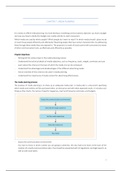Samenvatting
Summary Chapter 7 Marketing Communications
- Vak
- Instelling
- Boek
Summary study book Marketing Communications of Prof Patrick de Pelsmacker, Prof Maggie Geuens (H7) - ISBN: 9781292135809, Edition: 6, Year of publication: - (chapter 7)
[Meer zien]





